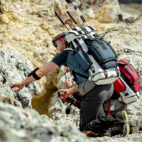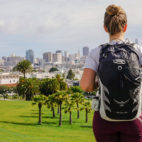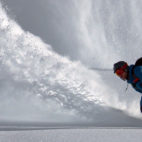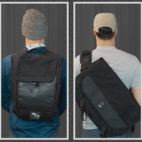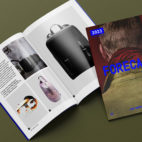Beginner’s Guide | Gear to Stay Safe Outside
Nature is dangerous. Whether it’s an increase in bear attacks or your local swooping magpies, even a quick jaunt into the wilderness can present a safety hazard and with the relatively recent increase in flexibility of where and when people work, more people are heading out into the backcountry, and more people are getting lost. We here at Carryology have been brewing the idea of the different ways people interact with nature and the specific concept of “mid-country” and why it can be so dangerous to newer wilderness explorers. Let’s take a look at this idea and how you can stay safe this season.
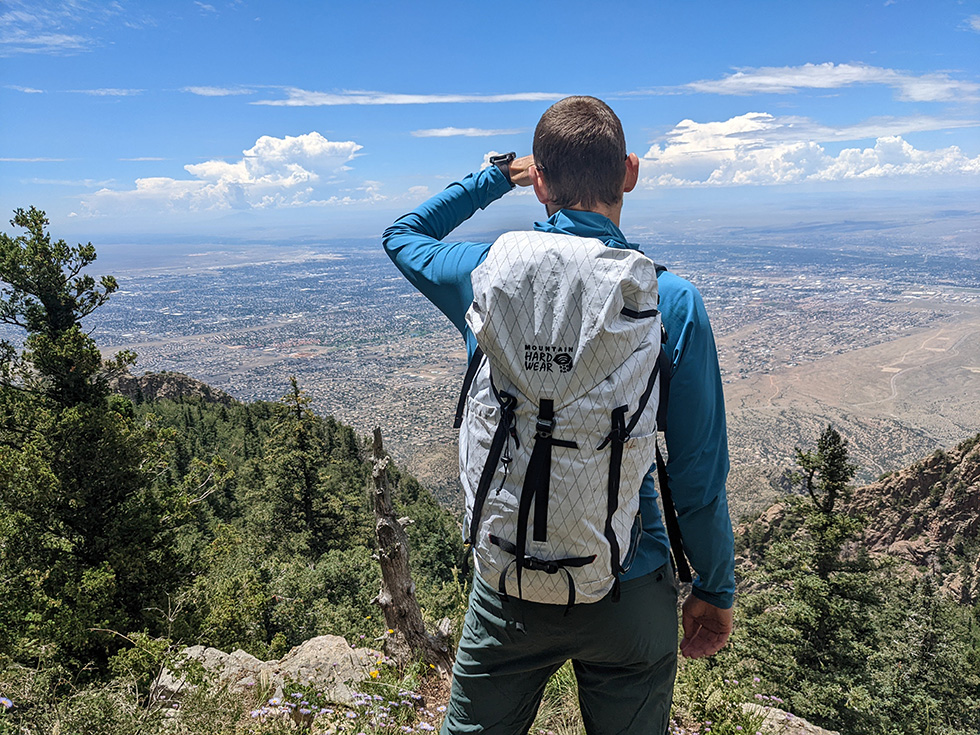
What is “Mid-Country”?
Most people, regardless of experience, are familiar with the idea of “backcountry”. It’s where you go when you want to get away from people. You strap on your pack, tie down your bivy, and head out into the wilderness to “get off grid” or “live off the land”. If you’re someone who has been fortunate enough to be introduced to outdoor activities and feels comfortable in austere environments, the idea of a two-day backpacking trip probably isn’t that intimidating to you. However, if you’ve never even been car-camping, the idea of having to sleep outside, bring your own food and water, and running into a plethora of potential problems while miles away from civilization might be enough to stop you from diving all in. That’s the idea of backcountry–the barriers to access are high enough that (most) people will take the time to acquire the skills and resources to successfully be in those environments–the more remote, the higher the barrier to entry, the (hypothetically) more prepared people will be before they even attempt to adventure.
Take this in relation to “frontcountry” which might be your town’s local trail system or hiking area. Maybe you can see the parking lot the whole time you’re out and you’ll probably pass at least a few people in various iterations of outdoor gear ranging from tacticool to yoga-dad. Anyone can easily access the outdoors at these places and even the most ill-prepared adventurer will have a myriad of resources to help them if they get into trouble. It’s easy to get to, and easy to stay safe.
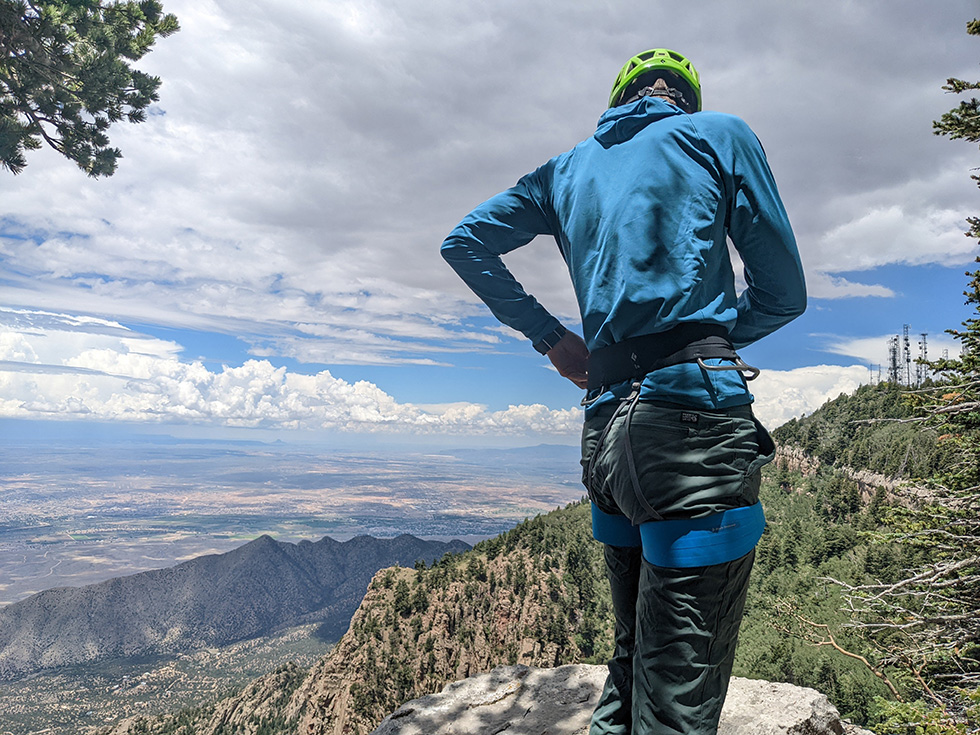
Enter “midcountry”. In my town, it’s the back side of the local mountain range: about a 40-minute drive from town and while the front side of the range is most definitely “frontcountry”, the back side doesn’t seem too intimidating to the average recreational enthusiast. Usually this doesn’t present a problem and thousands of hikers, climbers, walkers, and bikers head out into the mountains and come back without any problems. However, places that I classify as midcountry are places that can easily get wild with a variety of weather, terrain, or other dangers, throwing some less experienced outdoorists in way over their heads. In my own backyard this often means rallying our local volunteer mountain rescue group to assist a hiker who got lost on an unmarked trail or a group who came underprepared for changing weather conditions.
Now before we go too far, I want to make it perfectly clear that my goal is not to scare you away from pushing your limits and heading outside–just the opposite in fact. No matter what your skill level, I want to encourage you to head outdoors as much as possible, but I also want to make sure you come back and while I can’t protect you from a rogue wildcat or freak avalanche, I can help you be prepared. So without any further ado, here are the 10 things you need to bring with you before heading into the front, middle, or backcountry.
1. Knowledge is power
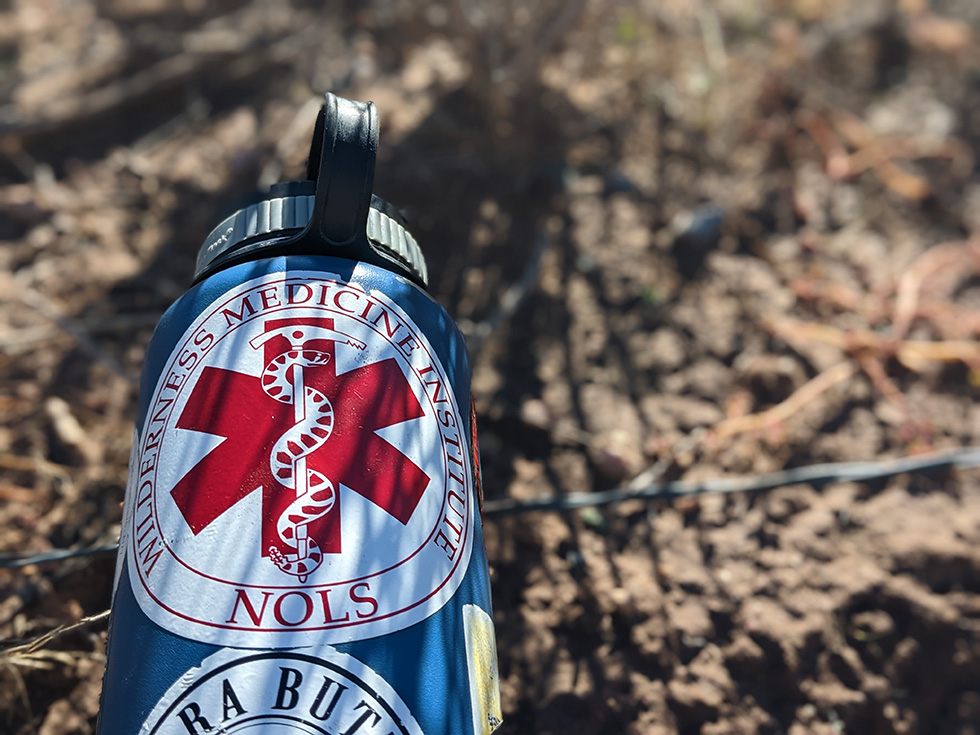
Okay, so I lied. First off, the list will have 11 things and second off, here’s some further ado. The next 10 things on this list are absolutely useless without proper knowledge. As an Emergency Medicine doctor who sometimes operates in austere settings, I see tons of people stocking first aid supplies that would rival the kit I carry in a critical care helicopter, but carrying these things into the wilderness without knowing how to use them is akin to putting me in the cockpit of an F16: It’s gonna make me feel really cool, but I’m probably more likely to hurt myself than anything else and I’m definitely not carrying an F16 in my pack for my overnight camping trip. Same goes for that $1000 GPS you just bought…it might have a 7-week battery life and have topographical accuracy to within 17 inches, but if your ability to use it starts and ends with “red button turns it on” it might as well be an expensive rock at the bottom of your pack.
Investing in your knowledge by taking a Wilderness First Aid course through the National Outdoor Leadership School (NOLS) or upping your navigation game by meeting up with your local Orienteering Club is probably a better use of your time AND money than almost anything else. Another huge advantage to meeting locals in your community is meeting mentors who can help you advance your skills safely, not to mention often helping you find deals on used or high-quality, entry-level gear when you’re first getting started.
2. Navigation: Get There and Get Back
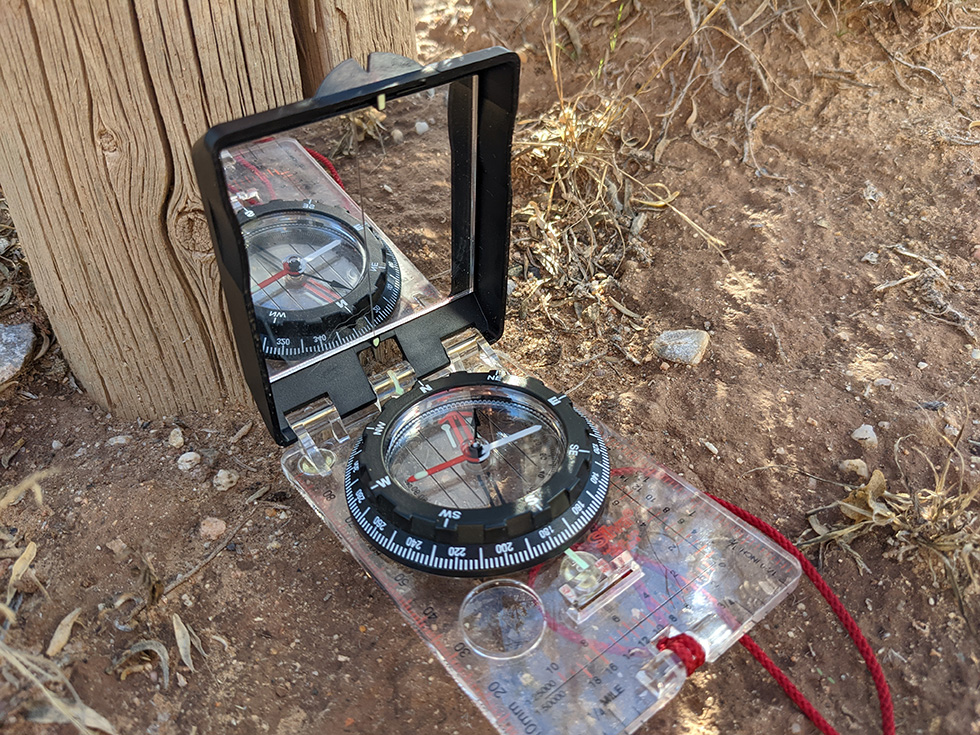
Arguably one of the most important parts of an adventure is where you’re going and how you’re going to get back. Depending on your destination, that powerful GPS-enabled supercomputer in your pocket might be all you need. I usually make sure my destination is downloaded on Google Maps, or another outdoor navigation app such as AllTrails, or Garmin Earthmate ahead of time and if I’m relying on my phone for anything important it’s not a bad idea to bring some extra juice.
If you want to leave the phone behind (hint: don’t do that in case of emergency. Maybe just turn it off), you can try a standalone option. Many of the new Garmin Watches have preloaded and downloadable topo maps and you can even plot your route in advance.
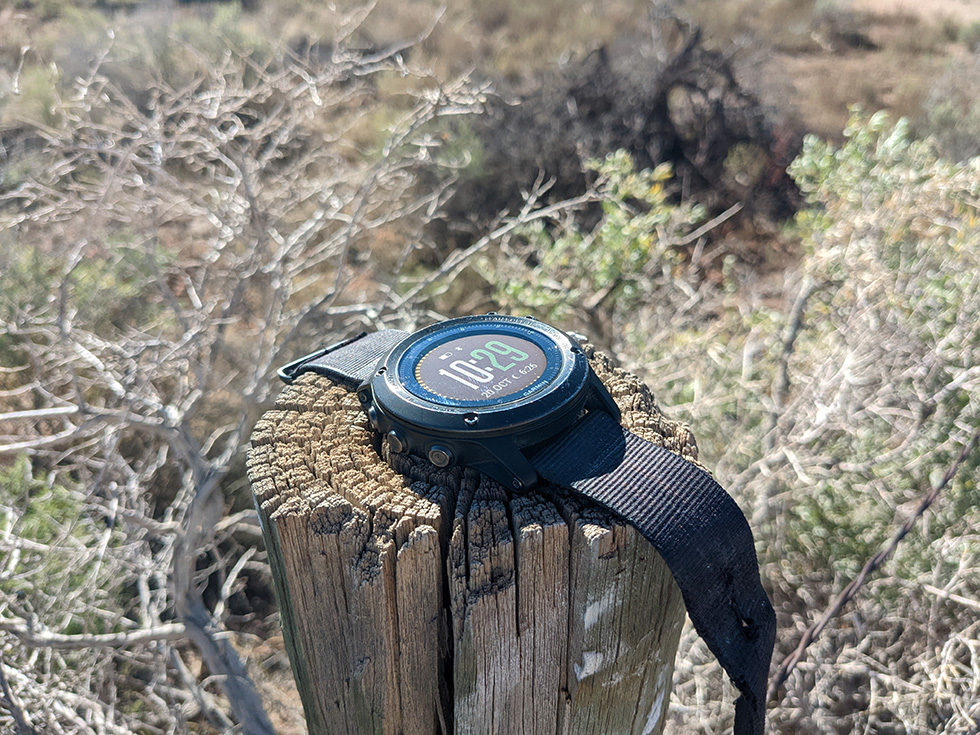
For the low-tech, nothing beats a good map and compass. As mentioned above, make sure you know how to use them, but sometimes there’s nothing more satisfying than some analog navigation.
3. Communication: Can You Hear Me Now?
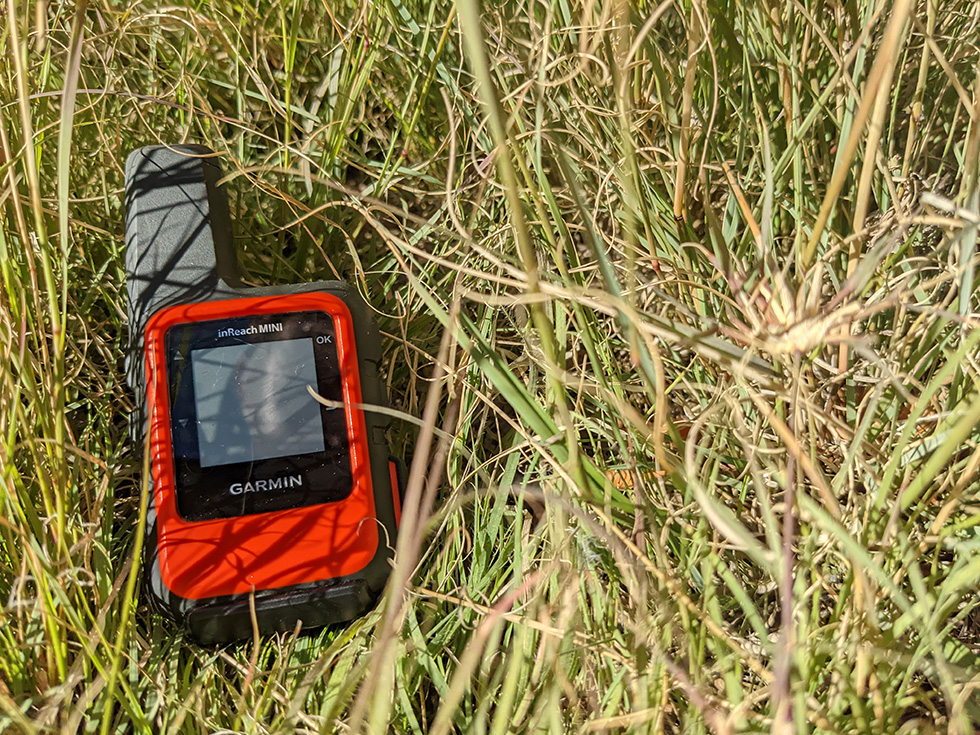
As above, sometimes the best tool for the job is the one you already have, and many frontcountry areas will have great cell reception. That being said, having an emergency communication device might save your life and can be a relatively small investment if you’ll be spending time outdoors, especially alone. I’ve had the Garmin inReach Mini for several years now and while neither the device nor the monthly subscription is cheap, it gives me the confidence that I can always get in touch with loved ones (or rescue crews) in a pinch and with a live tracking option my support crew can follow me on longer adventures to make gear or supply drops.
Again, if you’re looking to get away from technology, having a whistle and signal mirror (again, prior knowledge required to use) are the minimum requirements to stay safe without taking up too much space. While any whistle will do, we know that Carryology fans have a slight penchant for overly-engineered products so checking out the Fox 40 and Vargo titanium whistles might be a good way to spend a few extra bucks.
4. Light: Like a Moth to a Headlamp
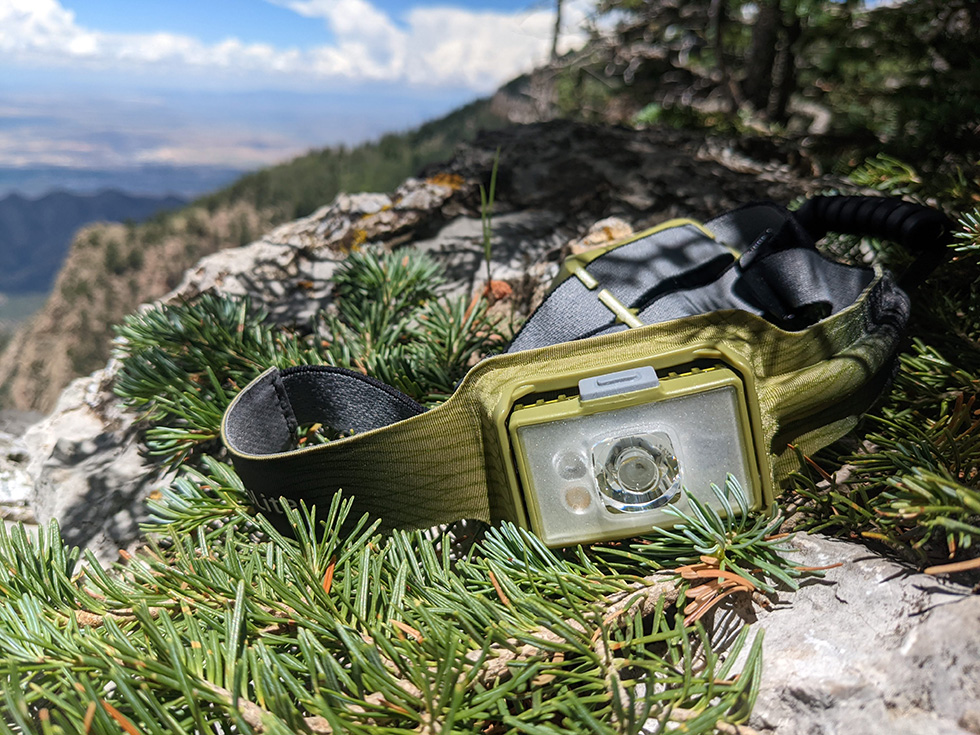
The number of times I’ve headed out on a late afternoon run or ride and ended up coming back in the dark with only my cell phone light is almost equal to the number of times my cell phone has run out of battery about half a mile from the car. Carrying an emergency light source, even if you plan to be back well before sunset, can not only save your butt, but give you flexibility to take your time, watch the sunset, or explore that new trail offshoot.
Recently, I’ve been throwing the BioLite 325 headlamp into my pack anytime my adventures might butt up against sunset. It’s small enough to fit in a running vest or even jacket pocket but is WAY better than a phone light if you find yourself on the trail after dark. For those times when your intention is to be out past twilight, I’d recommend the BioLite 800 Pro which is comfortable enough for trail running and has enough juice to last you until sunrise.
5. Sun Protection: Not just sunscreen and funny hats
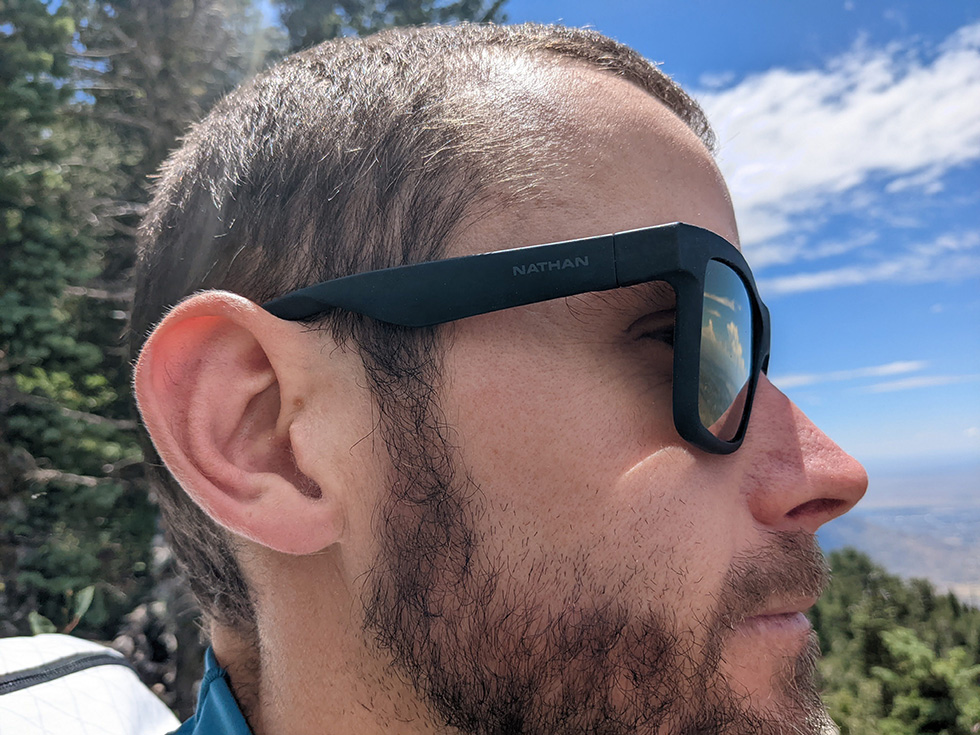
Actually, it is kind of all about sunscreen and funny hats. While you may not think about sun protection when the ground is covered in snow, you’re equally as likely to have problems from sun exposure when it’s cold out compared to when it’s warm. Tailor your wardrobe appropriately (more on this later) for the season but don’t forget eyewear, head coverings, and a good ol’ dollop of white stuff on any areas not covered by clothing. At Carryology, we’re fans of Zealios sunscreen (as well as their other offerings) in terms of protection and water resistance.
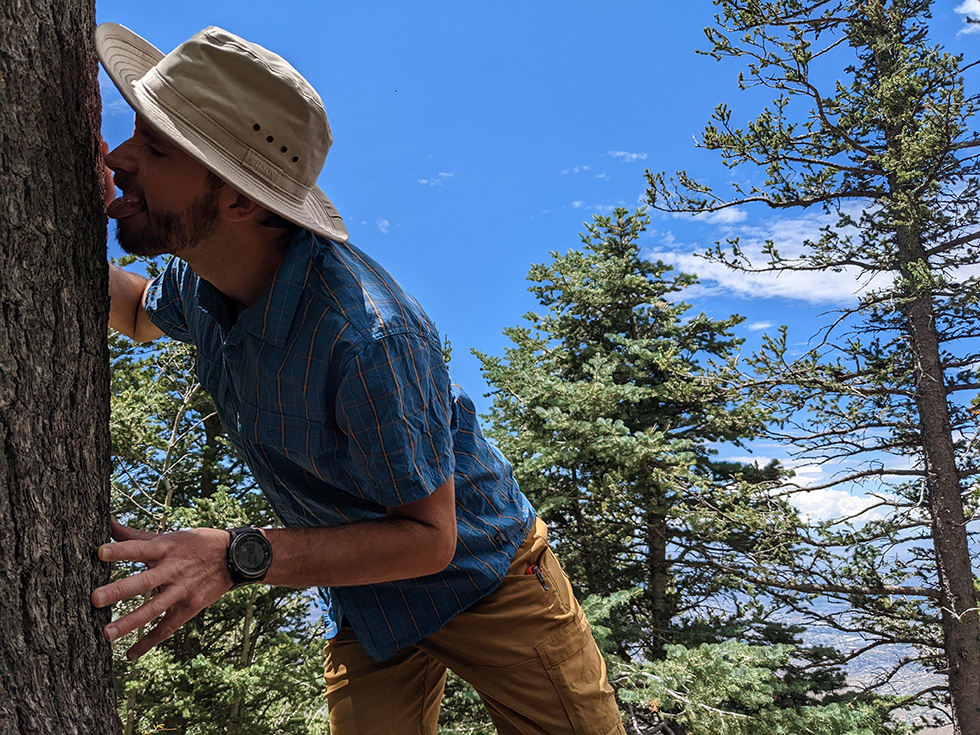
If you’re looking to keep the sun off your dome, the Filson Summer Packer Hat looks good on the trail and at the bar afterwards and will keep your ears from getting fried. If you’re more of a cap kinda person, I tend to rock a local maker, Send It Safely, but I always support finding your own local flavor.
6. First Aid: Boo-boos and Bandaids
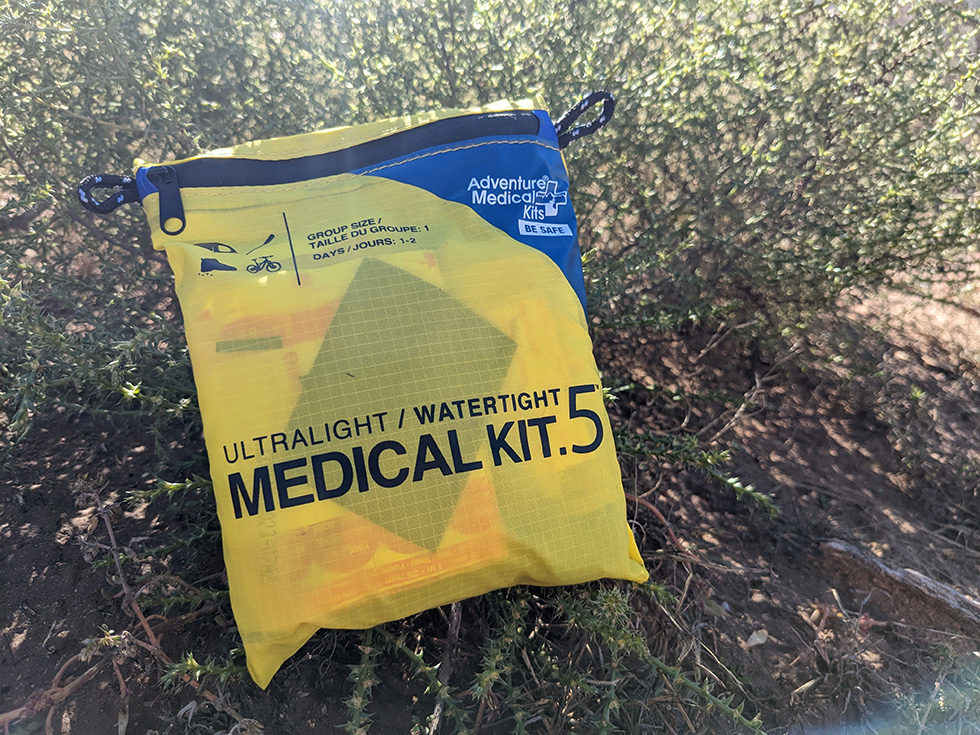
This is always a contentious backcountry topic and you can go as far down the rabbit hole of wilderness medical kits as you like. Our best advice is to separate your kit into “life-saving” and “comfort”. For me, I file things like tourniquets under life-saving. On the other hand, as someone who is prone to migraines at high altitude, I never go anywhere without 1000mg of Tylenol as part of my comfort kit. No, we’re not going to give you any medical advice here, but if you’re looking for a solid, reputable, pre-packaged system that doesn’t go over the top but has enough to keep you safe and comfortable, Adventure Medical Kits makes a variety of outdoor-oriented offerings that won’t break the bank.
7. Knife: That’s Not a ____
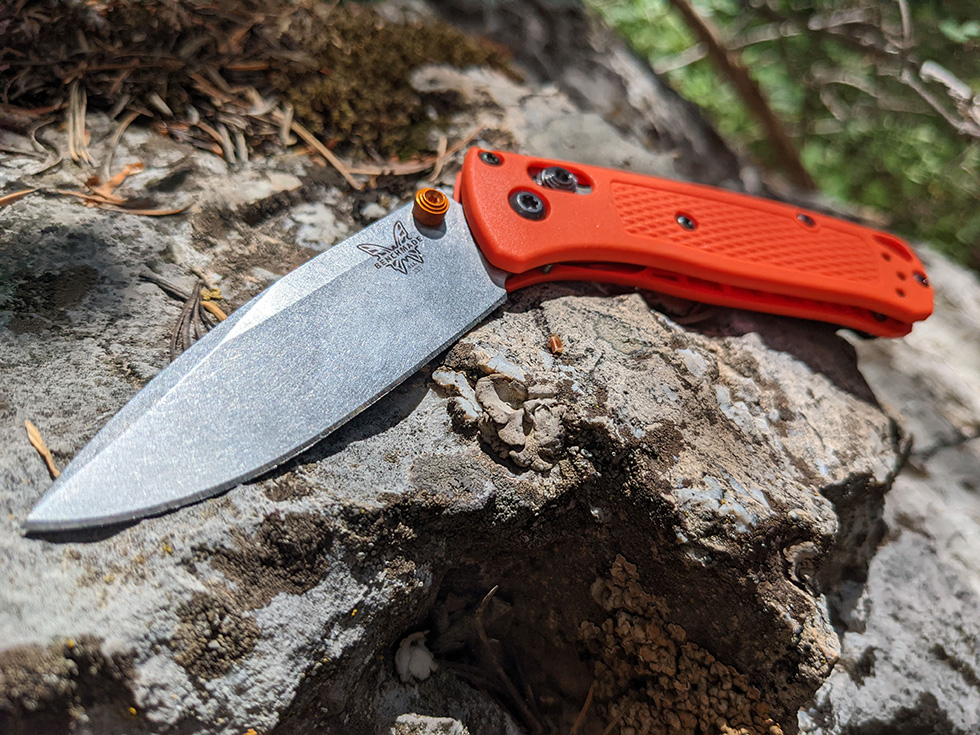
Of all the things on this list, this is the one I am LEAST qualified to talk about. I’ve been carrying the same Leatherman Skeletool for pretty much as long as I can remember. Instead, take some advice from Taylor Weldon on pocket knives or the Carryology HQ Team if you want some truly drool-worthy blades. For me, the important part is to have a tool that can cut my steak, widdle a stick, strike on a flint, and open a beer. For you, it might be important to be able to field dress a squirrel or fight a ninja. Whatever it is, having a reliable tool is important but doesn’t need to break the bank.
After hearing that I knew pretty much nothing about knives, Benchmade was kind enough to send over one of their Bugout models to teach me a thing or two. Not only is this an easy blade to take care of, but it’s light enough that even my weight-weenie partner will carry it on one of her ultra-light trips without TOO much complaining.
8. Fire: Feeling Hot, Hot, Hot
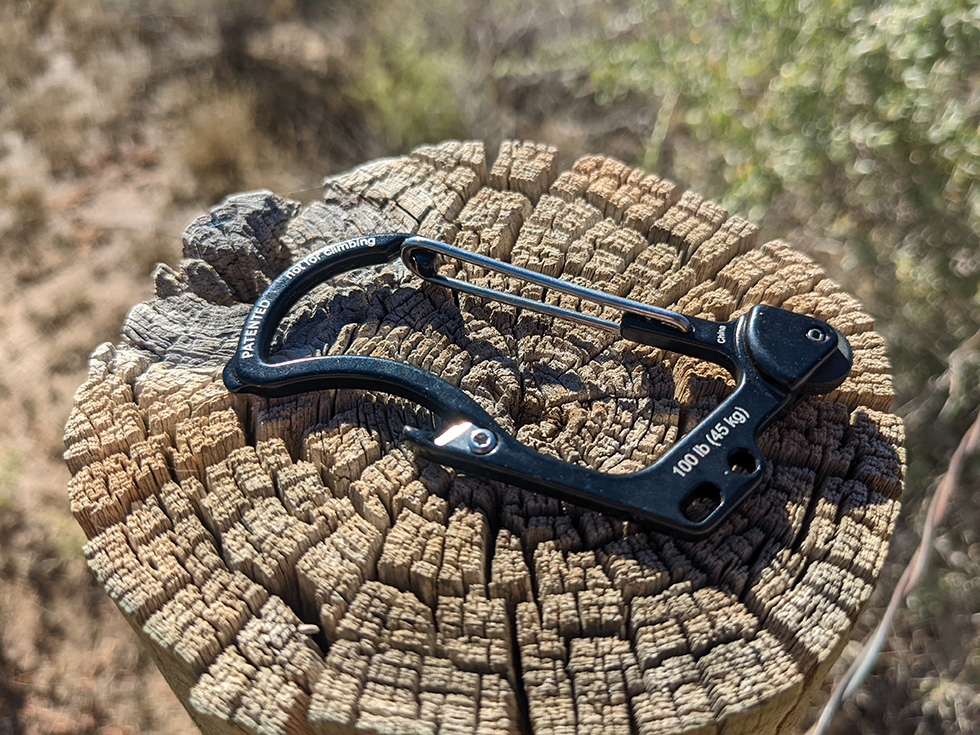
Again, this is not something you might think of when taking your dogs out for a quick stroll on the local trails, but carrying the right supplies to start a fire can be crucial if you find yourself lost in the backcountry. Not only does fire provide heat, water sterilization, and a possible signal for help, but it also improves morale, which can be vital in real survival situations.
If you’re carrying a knife, you might just need to add a ferro rod to your pack which doesn’t cost much and doesn’t take up space. I carry a bit of a DIY fire kit and the Firebiner from Outdoor Element which weighs practically nothing. You could also opt for a small tin of waterproof matches, or your favorite classic Zippo Lighter. Again, these tools are useless without appropriate knowledge so study up!
9. Shelter/Clothing: AKA FASHION
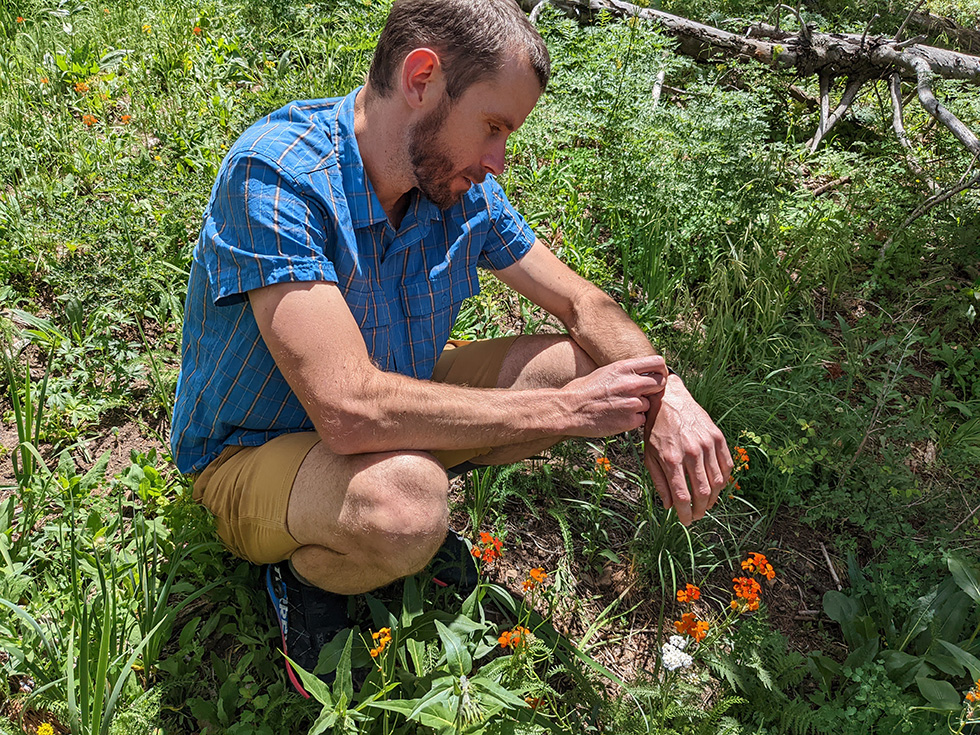
The survival rule of 3s says that you can survive 3 weeks without food, 3 days without water, and 3 hours without shelter. At minimum I always bring some kind of emergency shelter such as a space blanket if I plan to go anywhere even remotely wild. Depending on your season, getting too hot or too cold (sometimes both) can be your biggest safety issue. Knowing how to layer is probably the most important part of any big outing in terms of staying comfortable.
This season I’ve been using a combination of gear from prAna and Mountain Hardwear. The Stretch Zion Shorts from prAna are pretty much the most comfortable pair I own, and unlike many other cargo shorts, can actually be worn in public without being ashamed that you’re wearing cargo shorts (they look that good!). On warm days, you can pair that with the Kirkwood button-up and easily go from trails to the bar without an outfit change.
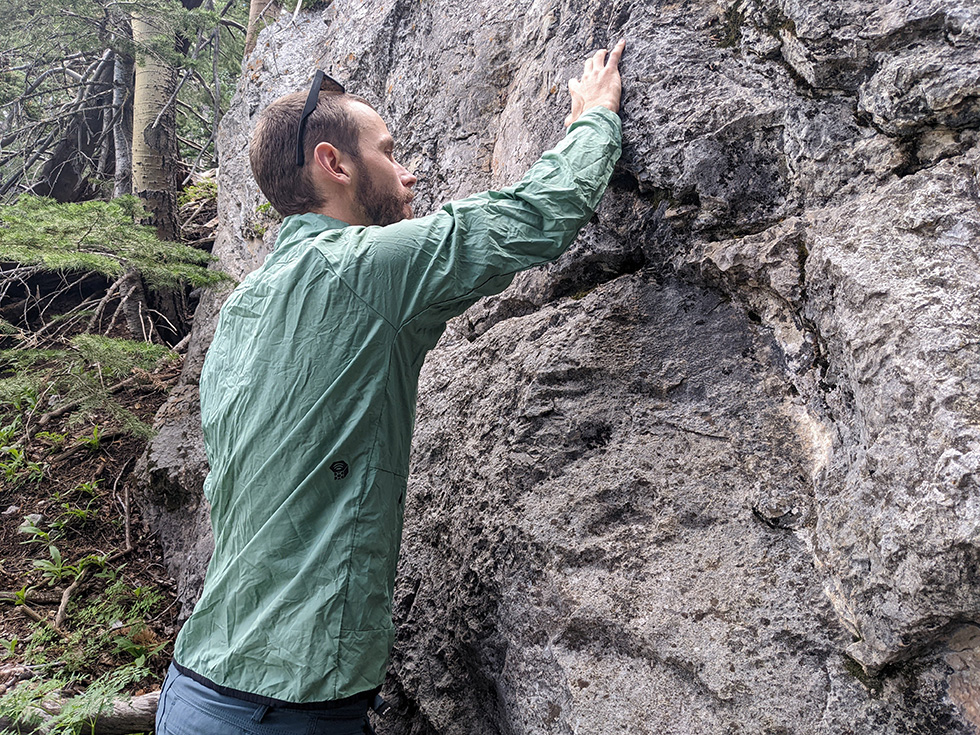
On a bit chillier note, Mountain Hardwear has been bringing the fire to keep you warm as winter approaches. The Kor AirShell Jacket is something I’ve been bringing with me pretty much every time I head out and has quickly become my favorite ultralight windshell. Paired with the Mountain Stretch Hoody and the Stryder Pants, you can head out for a day in nature and be covered for any temperature or conditions.
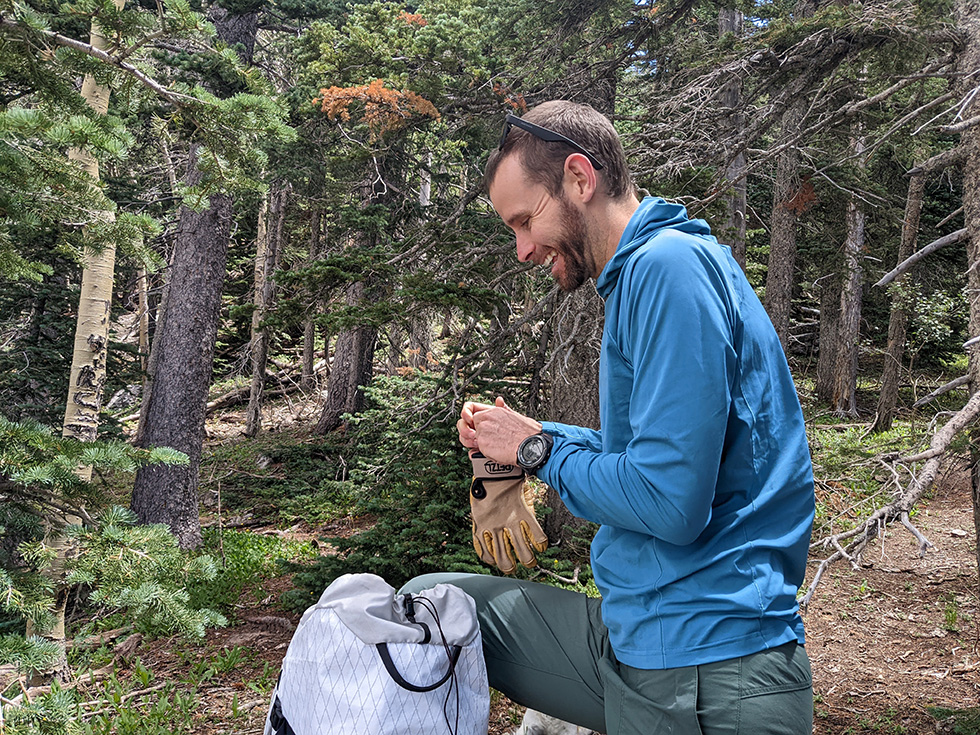
10. Food: It’s What’s for Dinner (and Lunch, and Breakfast…and Snacks)
Even if I think I’m just going out for a quick 30-minute trail run I’ll always stuff a gel or a bar in my pocket or running vest. At worst you’ve added an extra 3oz of weight and forget about it, only to find an expired GU in the wash 3 months from now. At best you prevent bonking when your easy recovery run accidentally turns into an all-day affair. If you plan on going on a longer trip, it’s never bad to treat yourself to a warm meal by bringing your Jetboil and some dehydrated food pouches or an outdoor coffee setup.
11. Water: H2 OH YEAH
You’d think this would be a no-brainer but bringing the right amount of water is always difficult. I tend to either over-prepare and end up lugging 10L of water on the last day of a backpacking trip or under-prepare and finish my ride at the car with a dry, parched throat. As a general rule of thumb, I usually assume I’ll drink about 750ml water per hour, with adjustments made depending on the season, activity, and my own fitness level. If you’re going somewhere where flowing water is available, something like a small Sawyer water filter might help keep your back happy by reducing carried water weight and your stomach happy by keeping out bad bugs.
Wrapping Up
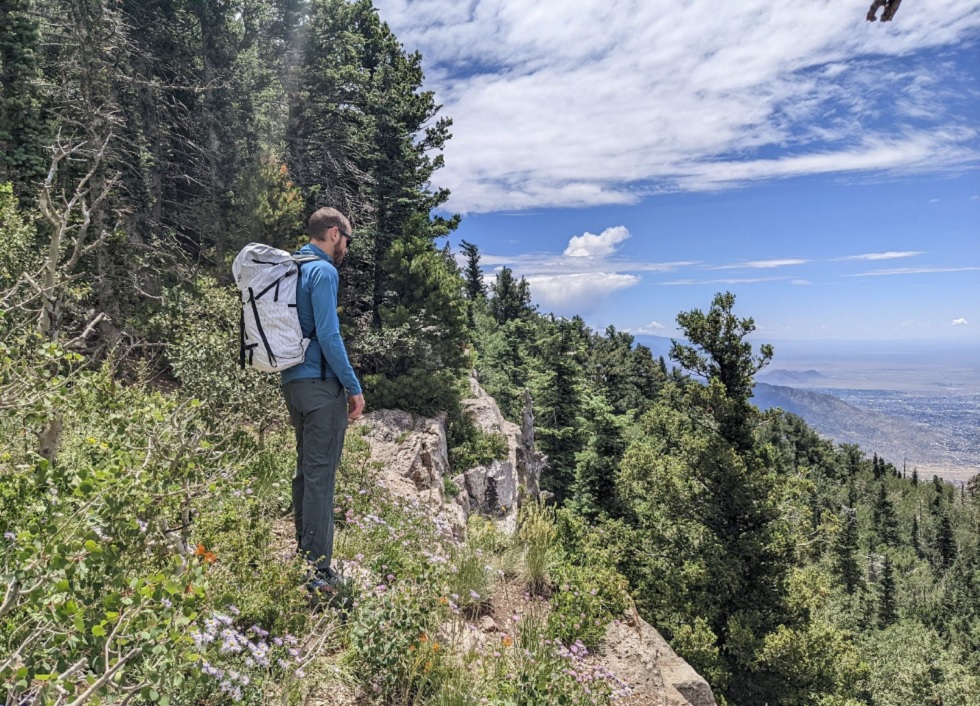
So there you have it, 10 (plus a bonus) things you need to consider to stay safe whether you’re on your local trails or in the middle of Antarctica. Obviously as your needs and adventures change, your loadout will as well. While some of us relish being able to have a specialized kit for hiking vs. biking vs. paragliding, others prefer to have a jack-of-all-trades pack ready to go on any adventure at any time. While I might not carry an expedition tent on my evening dog walk, I’m not here to yuck your yum. The most important thing about getting outside is doing it in a way that’s both safe and fun.
Do you have gear that you won’t leave home without? What’s your most ridiculous story of being over or under-prepared for an adventure? Join our community and let us know!
This article was written by Jeff Wayland, trail runner, backpacker, cyclocross racer, fledgling paragliding pilot, and wannabe DIY pack maker.





 Carry Awards
Carry Awards Insights
Insights Liking
Liking Projects
Projects Interviews
Interviews




